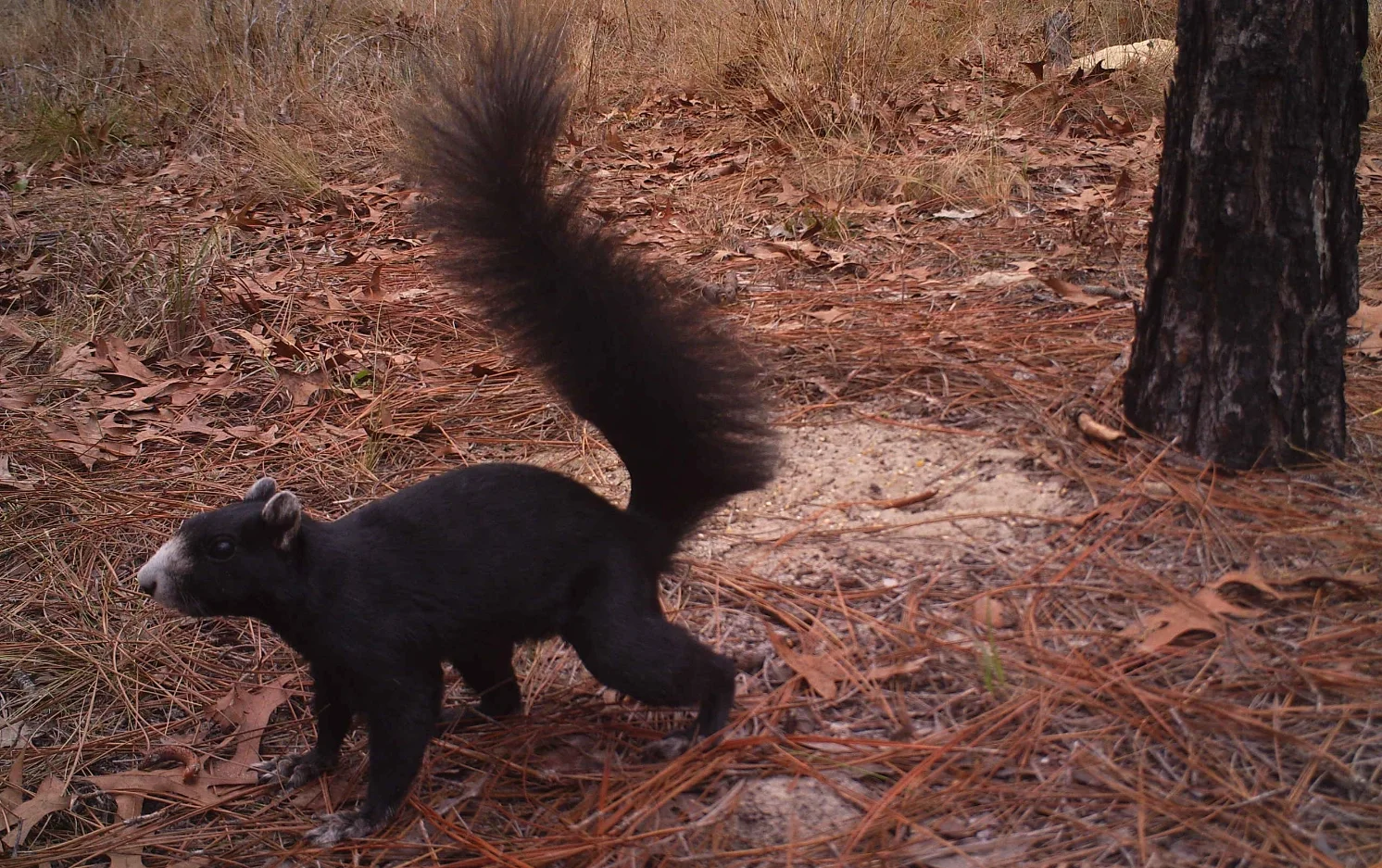The fox squirrel (Sciurus niger) is a large tree squirrel that occurs over much the U.S. east of the Rocky Mountains, with a historic range in the west from the prairie provinces of Coahila, Mexico to Manitoba, Canada, and throughout the eastern U.S. from western New York to Florida. There are currently 10 recognized subspecies, three of which have a conservation status: the Delmarva fox squirrel (S. n. cinereus) in Maryland is listed as endangered, and two subspecies in Florida, the Sherman’s fox squirrel (S. n. shermani) listed as a species of special concern in central Florida and the threatened Big Cypress fox squirrel (S. n. avicennia) in southwestern Florida. Two additional subspecies in northern Florida, the southeastern fox squirrel (S. n. niger) and Bachman’s fox squirrel (S. n. bachmani) have no conservation designation. Fox squirrels use a variety of habitat types throughout their range, but in Florida can most frequently be observed in the sandhills and mesic flatwoods.
In the southeastern U.S., fox squirrels have geographic variation among populations, exhibiting differences in body size and pelage color, and have been considered to display more color variation than any mammal in North America. Adult fox squirrels typically weight 1-3 pounds, and throughout most of their range, individuals exhibit a common agouti color phase. However, in the southeast, full and partial melanic (black) individuals are common, as shown in the photograph above. This color phase is likely an adaptation to frequent fires, where the background alternates from light to dark with burning and vegetative regrowth.
Throughout Florida, the conservation and management of fox squirrels is constrained by a lack of reliable information on the factors influencing their distribution at local and regional scales. To address the information gaps in their distribution and habitat use in Florida, researchers at the University of Florida and the Florida Fish and Wildlife Conservation Commission have been collecting information of fox squirrel sightings from the public and from natural resource professionals in an online Fox Squirrel Registry. Additionally, to determine how landscape features and management practices influence the distribution of fox squirrels in Florida, researchers are also conducting presence/absence surveys throughout northern and central Florida.
Links to more information:
http://myfwc.com/wildlifehabitats/profiles/mammals/land/fox-squirrel/
https://www.fnai.org/PDFs/FieldGuides/Sciurus_niger_avicennia.pdf
-by Daniel Greene




